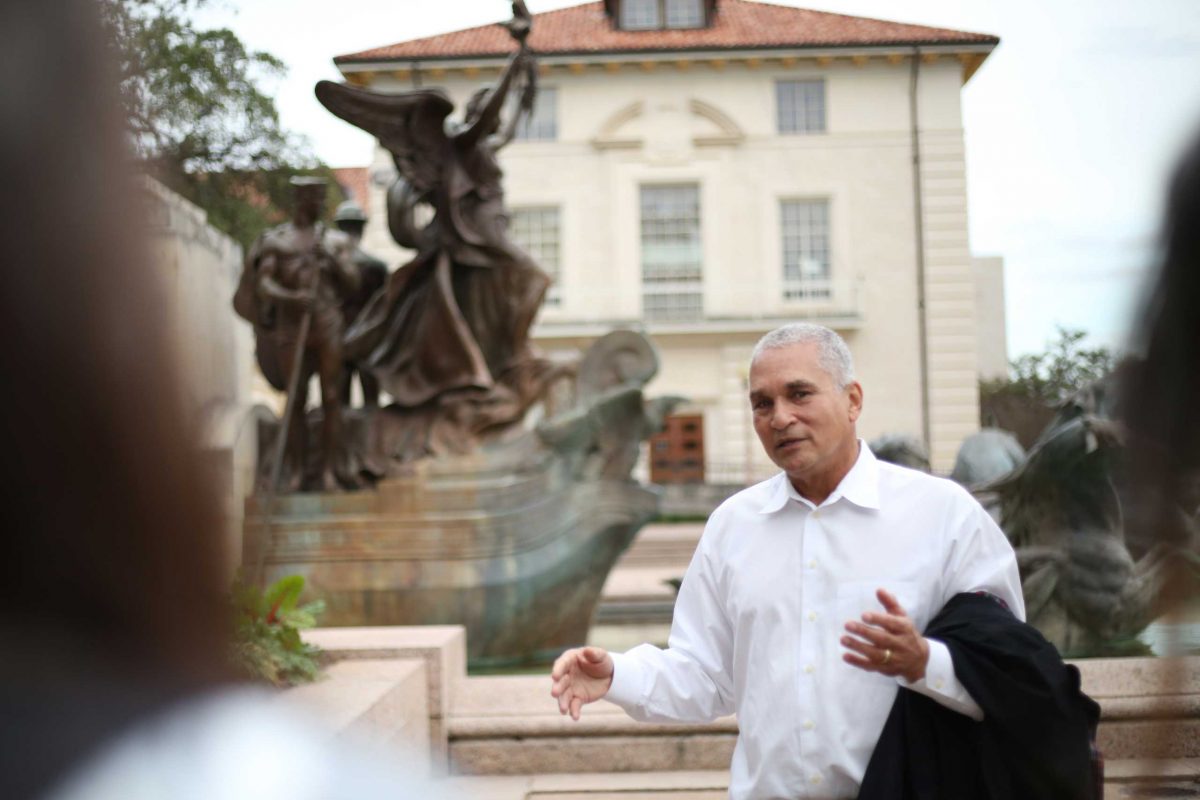Taking graduation photos in front of Littlefield Fountain and singing “The Eyes of Texas” at a packed home football game are common bucket-list experiences uniting UT Austin’s students and alumni.
Still, most people don’t realize the controversial history behind these traditions. For the last 20 years, anthropologist and founding chair for UT’s Department of African and African Diaspora Studies Edmund T. Gordon has taught generations of students, faculty and staff the “racial geography” of UT’s campus through an enlightening campus tour.
Now, as communities across the United States grapple with race and gender in light of racially-based violence by police and white supremacists, Gordon’s work is more relevant than ever. And, thanks to a collaboration between Liberal Arts Instructional Technology Services and Gordon, you can take the tour from the safety of your home or on a solo socially-distanced walk with guiding narration.
Here’s just a taste of what you’ll learn by taking this tour.
The often-Instagrammed Littlefield Fountain is named after former UT Regent George Littlefield, who served as an officer in the Confederate army, owned many slaves, and built his post-war fortune running Longhorn cattle over land previously occupied by Native Americans.
A major proponent of the “Lost Cause” ideology tied to white supremacy, Littlefield donated money during the Jim Crow era to erect statues and a memorial arch honoring Confederate leaders and Woodrow Wilson (a Southern Democrat with connections to the Klu Klux Klan and a damaging record of race relations). However, as costs for the project rose, Littlefield was persuaded by the project’s Italian-born sculptor, Pompeo Coppini, to change the plan from a costly arch to a large sculpture and an expansion of the existing fountain. Coppini also convinced Littlefield that the fountain should be dedicated as a World War I monument. Nevertheless, controversy has followed the fountain and its surrounding sculptures. Over the past 5 years, most of the statues have been removed or relocated. However, the plinths (or concrete holders) of the statues remain in the South Mall to inspire conversation, as does the fountain itself.
“The Eyes of Texas,” the spirit song traditionally played before and after each football game, also has a complex history. The song’s signature line traces its origin to a modified slogan of Robert E. Lee, later adopted by Lee’s former student and UT President William Prather. The song was first performed as a send-up of Prather in an early 20th century minstrel show performed by a student quartet in blackface. Such shows would be popularized from the 1920s-1960s by members of one of UT’s most influential (and controversial) spirit groups: the Cowboys. In recent days, current and former UT athletes issued a statement on social media requesting the administration to stop using the song at campus events and affirm their commitment to diversity and inclusion. One educational resource shared by players was the stop on Gordon’s tour describing the history of the song at the Texas Cowboys pavilion — a post that has now been viewed and shared thousands of times.
In a 2018 interview after receiving the Pro Bene Meritis award, the highest honor bestowed by the College of Liberal Arts, Gordon reflected upon his racial geography tour. After hearing the campus’ untold stories, he hopes tour-takers will understand two major points: one, that “power — gendered power and raced power — is built into the physical environment that people pass through and live in, and we need to learn how to identify it.” Two, that “UT historically played a major role in the racial politics of this state,” a reality inscribed and memorialized in the names of buildings, statues and landscape architecture.
Gordon’s tour identifies the discriminatory history in many of UT’s public spaces, and asks those who traverse the campus to enter the conversation about how traditions should be contextualized, modified, and yes, even discontinued. With the help of educators like Gordon, we can listen and learn from the past as we enter a conversation about what values and ideals UT should memorialize in the future.
